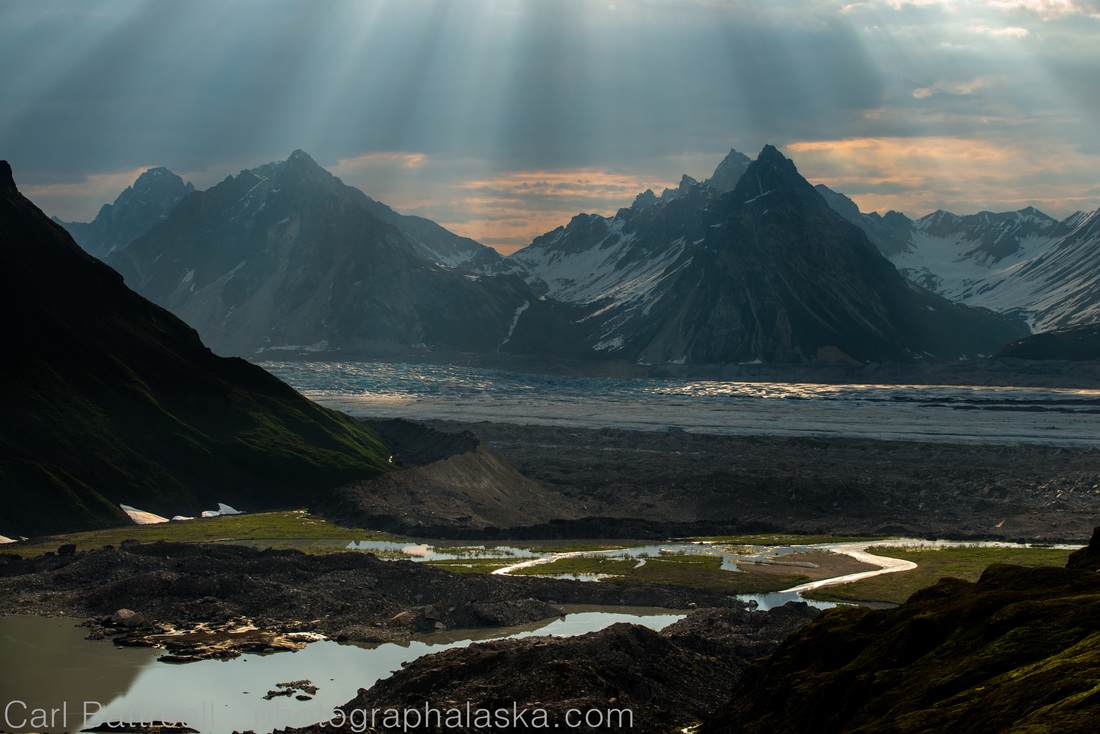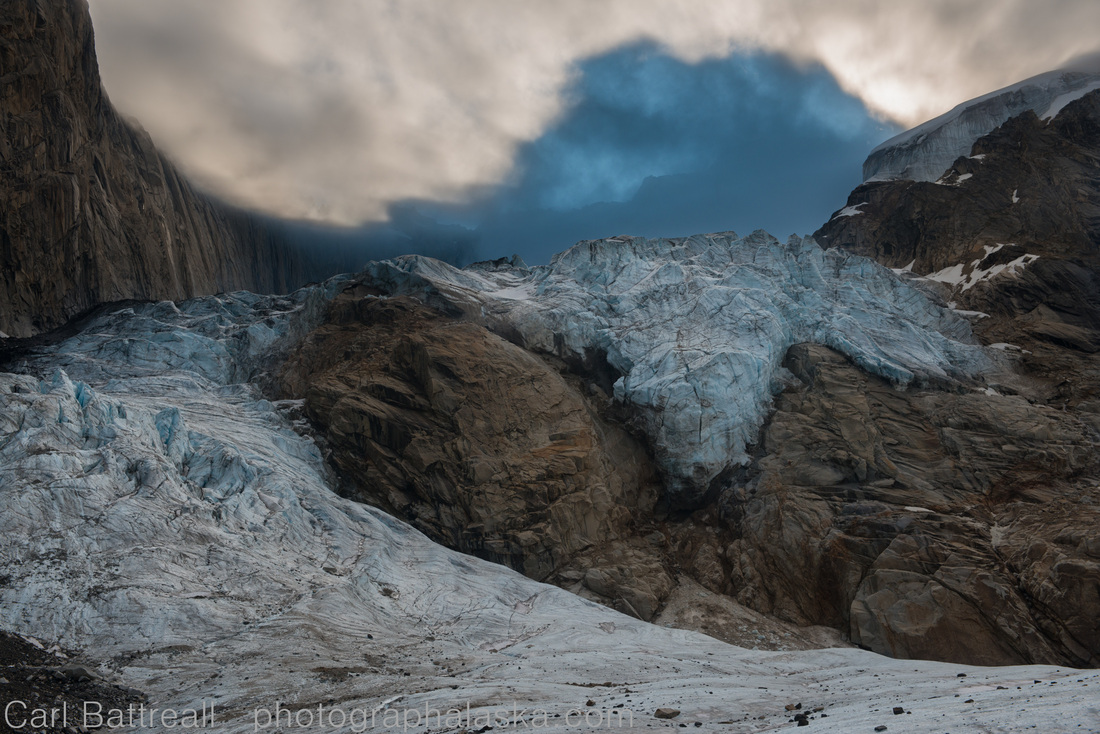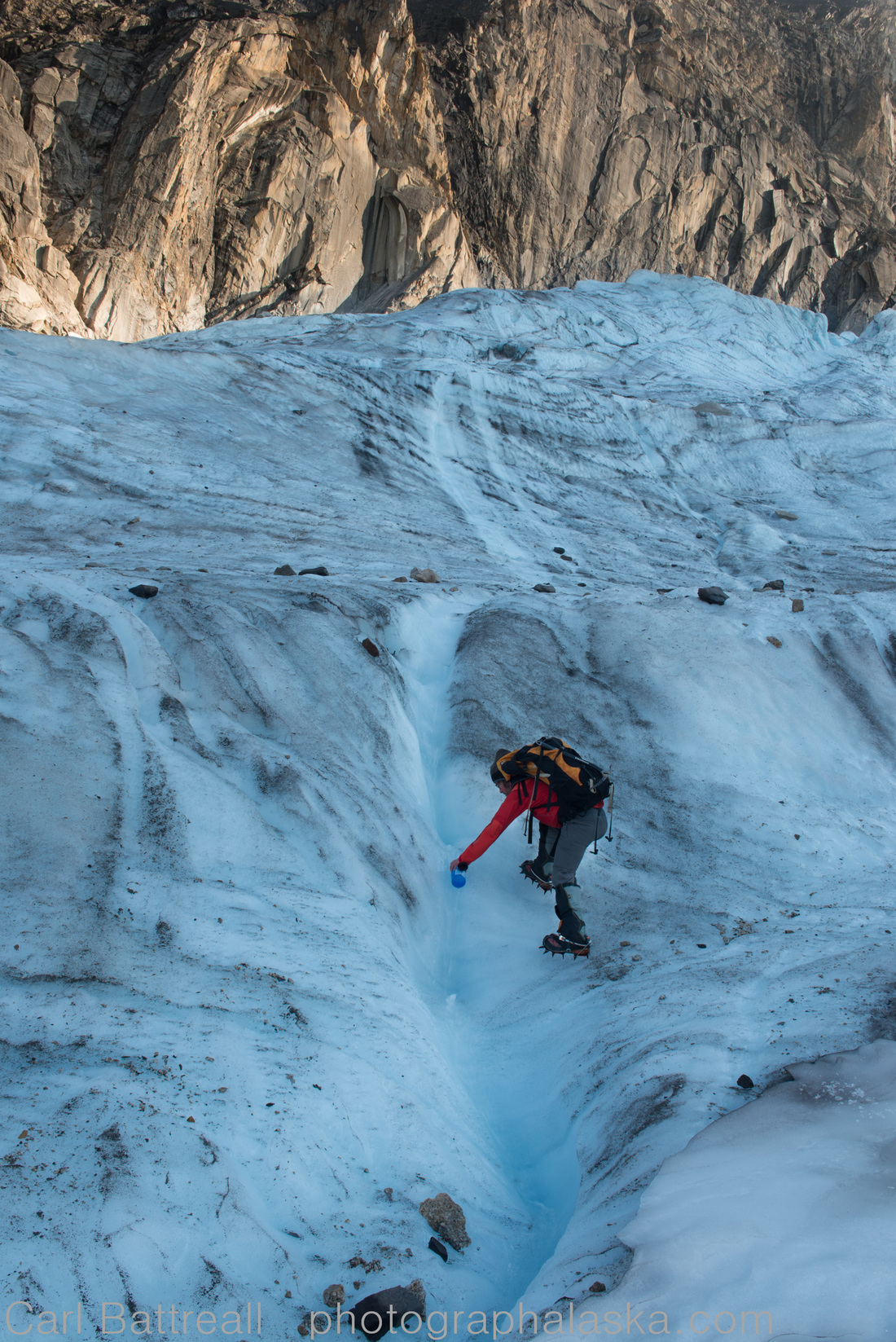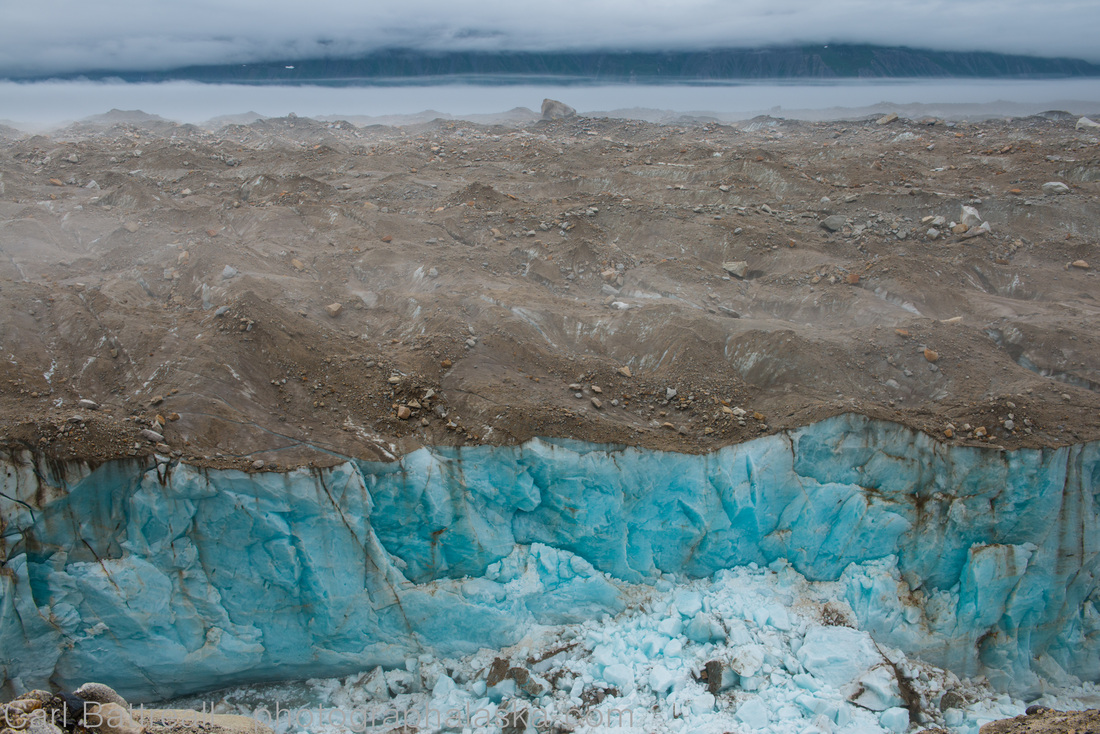Collecting Samples and Taking Pictures: Carl Battreall and the Alaska Range
I have returned from my latest journey in the Alaska Range. I flew into “Moraine Lake”, the terminal lake of the Backside Glacier. The Backside Glacier descends behind the legendary peaks of the Ruth Gorge, in-between the Tokositna and Ruth Glaciers.
I flew in with Alaska Range Project sponsor, K2 Aviation, on a glorious and unusually warm day. A heat wave had locked Alaska in a dry, record-setting summer and the day was blazing hot and uncomfortably sunny. This was my first time in the area and I had trouble deciding where I wanted to explore. I had to either go high for the views or head up glacier.
I choose to go high and camped near a small alpine lake. Photographing in Alaska in the summer, near the solstice, is hard. The days are long and the sun stays high for most of the day. Sunset was 11:59 and sunrise was around 4:00. The sky never really gets dark and rarely does that magic, alpine light happen. That was the case on this trip. In nine days I never witnessed any sunset/sunrise colors.
Working in variable, less-than-pleasing light is key to mountain and wilderness photography. Rarely do you have time to wait for the perfect light, the weather changes too quickly or you have to keep moving and work with the light you’ve got. There is always a pleasing angle of a mountain in every type of light, but being on the correct side of the mountain when the light is right is what is so difficult.
After I set up camp I tried to push up a series of side glaciers that descend from Mount Church and Mount Johnson. Within a few minutes I found myself stuck in one of the most spectacular thunder storms I have ever been in. The rain was relentless, pushing its way right through the “waterproof” nylon on my tent fly. The lighting lit up the sky and the pounding thunder echoed off the granite walls that surrounded me, It was both amazing and terrifying. The storm lasted about three hours.
I headed up the side glaciers the next morning. A fantastic shadow of Mount Church was being projected, by the rising sun, on the clouds behind the glaciers. The cool color of the glacier was a great contrast to the warm colored rock and light on the big walls of Mount Jonhson.
I spent the rest of the day exploring the Backside Glacier and collecting water samples for my partnership with ASC and Roman. I collected samples from melt-water on the surface of the glacier, from the outflow, Moraine Lake, the outflow of the lake and the river. I also collected samples from fresh water streams that descended into the lake.
Not usually a concern except I had heard there was a problem bear around, and this bear was walking in the same direction as my camp. I then realized what a bad idea it was to camp alone in an established camp area that I was sure the bear knew all about.
I followed the bear as it walked along the hillside. There is a section where the hill ends right in the river and you need to side-hill above it. Just as I was reaching that point, the bear decided to descend the hill to the river.
“Great” I thought, “I am going to end up in the river.” but I waited and the bear continued onward, towards my camp. I followed the bear as my warnings to him got louder,
“Don’t mess with my stuff bear!” I kept yelling. I once had a tent, sleeping bags and Therm-a-Rest pads get destroyed by a curious black that thought our stuff was fun. I got louder and more aggressive as he headed straight for my tent. Luckily, my badgering seemed to be annoying him enough that he made one circle around the tent and then continued up the bank.
For more incredible pictures and stories make sure you follow Carl on his blog and Facebook page or like ASC on Facebook and we will continue to update you on Carl’s project.




